On 15 February 2003, millions of people in approximately 800 cities around the world took part in protests against the impending invasion of Iraq.
Last Friday, on the 10th anniversary of one of the largest anti-war rallies in history, I was inspired to take a look at social and political activism in the 20th century through the lens, using the photographic archive of the Daily Herald newspaper.
Here are just a selection of the photographs I discovered…
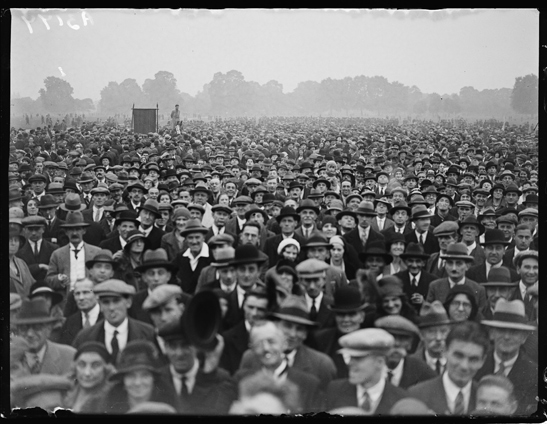
A photograph of a large crowd of people in England taken by George Woodbine for the Daily Herald newspaper in 1931. A large crowd of unemployed men and women—stretching to the horizon—demonstrate in Hyde Park, London. By the end of 1930 there were over 2 million unemployed in Britain, with soup kitchens and hunger marches becoming a feature of urban life.
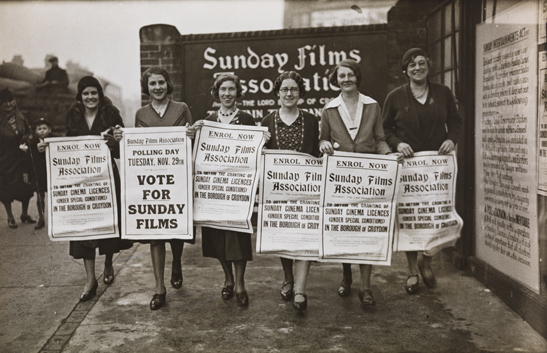
A photograph of members of the Sunday Films Association, taken by Woodbine for the Daily Herald newspaper in 1932. Under the Sunday Entertainments Act of 1932, anyone wishing to provide musical entertainment on Sundays had first to obtain a license from the Local Authority. These women are campaigning in Croydon prior to a local vote on whether to permit the screening of films on Sundays.
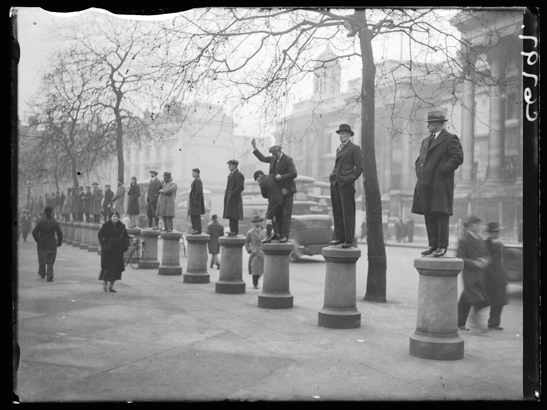
A photograph of a line of men standing on bollards around the edge of a demonstration in Trafalgar Square in London, taken by Edward G. Malindine for the Daily Herald newspaper in 1934. The London demonstration was possibly the culmination of a lengthy hunger march. Such marches were a feature of the economic depression in Britain during the late 1920s and early 1930s. Marchers protested against widespread unemployment and inadequate welfare provision.
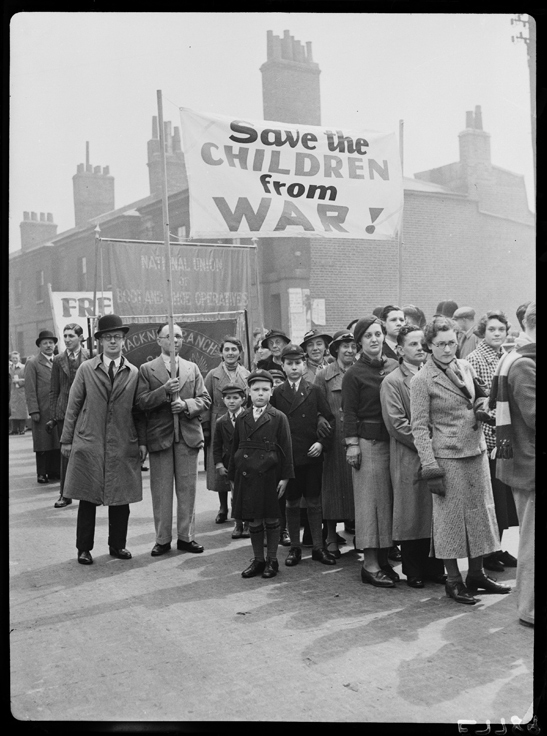
A photograph of anti-war demonstrators in London on May Day, taken by Tomlin for the Daily Herald newspaper in 1936. The 1930s saw conflict that the League of Nations—forerunner of the United Nations—was unable to contain. Pacifism had strong support within the western democracies, with many remembering the horrors of World War One. In Paris, 1889, the International Working Men’s Association declared May Day a holiday for the workers of the world. Socialists, trades unions and labour movements have continued to celebrate May Day ever since.
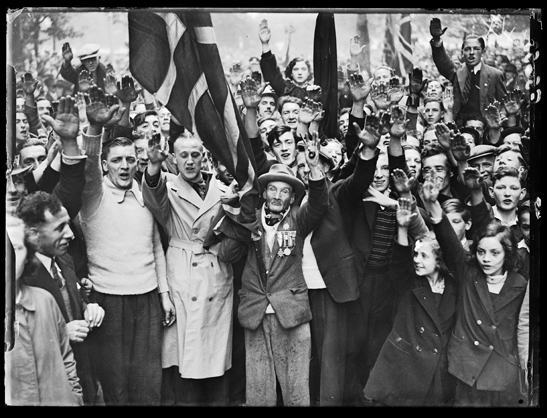
A photograph of a crowd of fascist supporters in Wood Street, Millbank, London, giving the Nazi salute for the camera, taken by George Roper for the Daily Herald newspaper in 1937. Struggles between parliamentary democracy, Communism and Fascism dominated the 1920s and 1930s. Clashes were frequent between members of Sir Oswald Mosley’s British Union of Fascists, and members of the Communist Party.
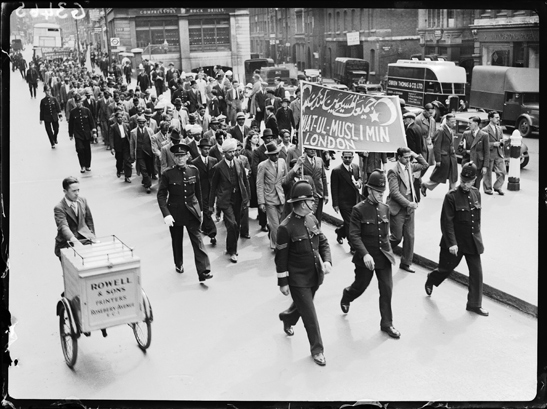
A photograph of Muslims marching through Queen Victoria Street, London, taken by Tomlin for the Daily Herald newspaper in 1938. The protest was made following derogatory references towards the Prophet Mohammed and the Koran by H.G. Wells in A Short History of the World (1922). The protest was disbanded on the embankment following a deputation made to the India Office, which functioned under the Secretary of State for India.
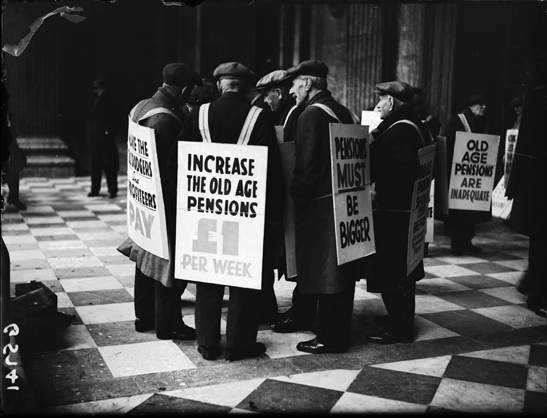
A photograph of a group of elderly men protesting for a higher pension, taken by George Roper for the Daily Herald newspaper in 1938. Standing in the porch of St. Paul’s Cathedral in London, the men wear sandwich boards demanding a pension increase by one pound a week. The first general old age pension paid by the government in Britain began in 1908. By 1925, the state pension was ten shillings (50p) a week from age 65. A basic flat-rate pension only became available to everyone in Britain with the National Insurance Act of 1946.
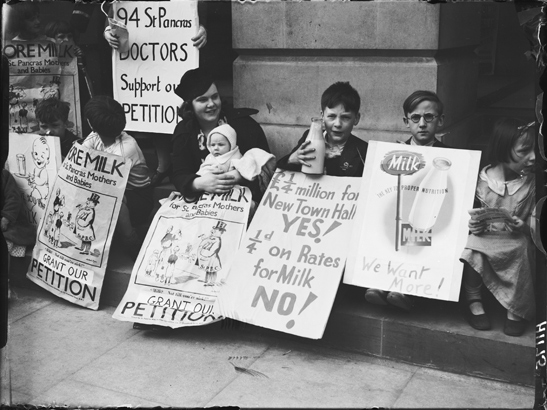
A photograph of a demonstration by mothers and children asking for milk for their babies, taken by George Roper for the Daily Herald newspaper in 1939. Sitting on the steps of St Pancras Town Hall, London, this group are petitioning their local council. In 1946 the School Milk Act ensured free milk was provided for all pupils under eighteen.
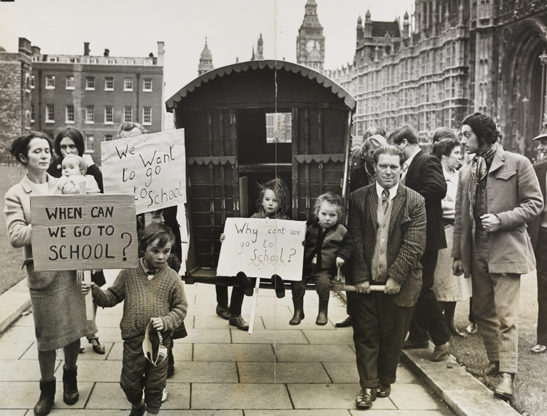
Do you have any photographs of rallies or protests to share? Perhaps you were at the anti Iraq war demonstration 10 years ago, or maybe you have some photographs of your parents as political activists. We’d love to see what you captured on camera and hear your stories.
I should have something.. give me a couple of days to check
Hi I would like to know if I could buy the picture of the gipsy family demonstration of gipsy children having the right to go to school. The picture of the man who is carrying the gipsy caravan with the children is my dad John smith It was 1968 the daily herald archive,science museum group collection. I also wonder if you have any more pictures of the same groupon that day. It would make my day to have the picture of my dad n the rest of the gipsys.